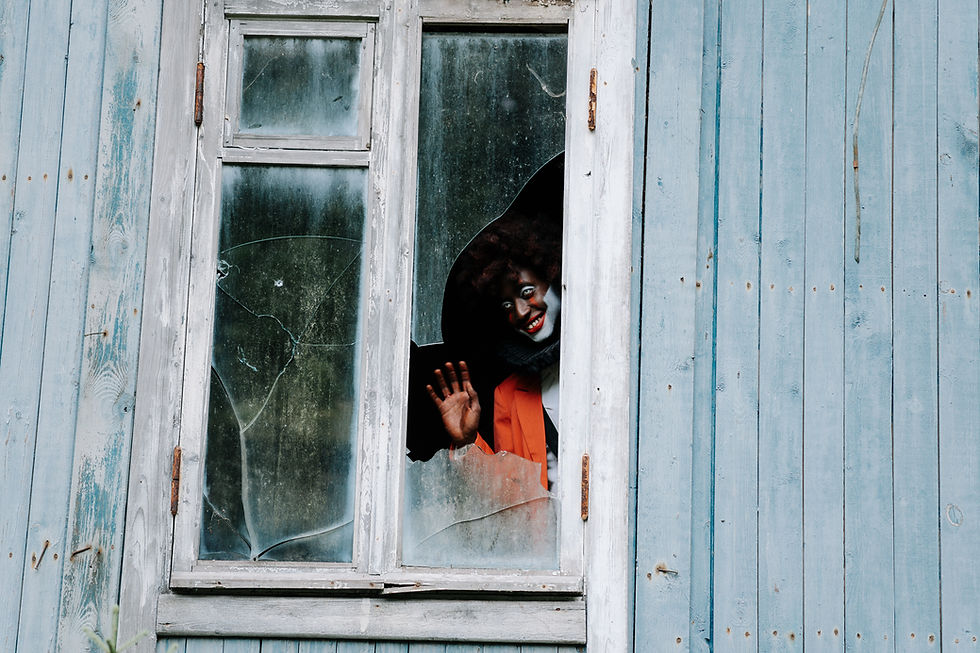Painting By Numbers
- J. Keith Parnell
- Feb 15, 2017
- 3 min read
CULTURE
The Art of Overstreet Ducasse
By Keith Parnell

JACKSONVILLE, FL— With layers of mixed media over harsh wood grains and the nostalgic green of chalkboard, Haitian born, local artist, Overstreet Ducasse challenges his audience to look far deeper than the surface. Soft muted backgrounds amplify Ducasse’s use of bold colors and striking foreground imagery creating a surreal sense of focus. His various icons, electrified by their own luminance demand your attention. With tone and structure, drawing on his Haitian roots and urban upbringing, he sets the stage for a countless number of viewer interpretations. Depending on your vantage point, these interpretations range from religious symbolism to socioeconomic injustice and seamlessly blend a childlike nostalgia with hard hitting adult issues.
The glaring overlap in scholastic undertones and societal topics should be no large surprise when considering the artist’s origins. Ducasse attributes his artistic influence to the challenges he and his family faced relocating and settling into an unfamiliar culture and language. In a 2013 interview with Jacksonville’s Folio Weekly, Ducasse discussed his adolescent discontent with school, with the notable exception to art.
“I went straight to school, a predominantly Hispanic and black inner-city school… school and me just don’t really mix,” he elaborated. “Everyone in Haiti is an artist, or at least the think they’re an artist. I’d say between 70 and 80 percent of people in Haiti are artists.”
Ducasse’s unique fusion of Haitian and American cultures breathes life into his various works. In recession-proof, such a fusion can be interpreted. Centered in a collage of alcohol labels spelling out the piece’s namesake is a horned deity figure in the form of a bartender. Reminiscent of the contemporary interpretations of Haitian Vodou entity Papa Legba, “Guardian of Crossroads,” the bartender is adorned with alcoholic symbolism including bottle cap earrings. Papa Legba being the link between this world and the next, Ducasse’s piece speaks to the dangers of alcohol addiction in a society in which it is so heavily marketed and encouraged. A shot glass marking the center of a bullseye, this piece could serve as an introduction or companion piece to a series of his “target” artworks.
In his Floreada Targets series the artist calls upon a variety of cultural icons and places them in the symbolic crosshairs of government corruption and social inequality. In FL Lottery Ducasse’s target is littered with miniature lottery pencils symbolic of bullet holes and framed by the fill-in-the-box style numerals associated with lottery picks. An ethnic woman carrying a bowl on her head filled, not with food but with more pencils, is a nod to the dependency of consumer nourishment to monetary gain.
Among others in this complex series is Extra Extra, touching on the hypocrisy of a public opposing marijuana legalization while partaking in various questionable consumer goods and ideologies such as cigarettes, Viagra, guns, alcohol, and mono religious values.
Deeply intertwined within each of his pieces are the undertones of cultural symbolism but none so direct as to not leave room for viewer interpretation. In Queen of Jewels, undoubtedly my favorite of the series, Ducasse names his subject within in the piece with print reading, “Rhonda Bristol, Queen of Jewels, Pg.12.” I was first attracted to this piece because of its likeness to Rhonda Bristol, having known her personally. Serendipitously reunited with my high school art teacher through Ducasse’s work, I connected with the artist on a personal level. Affectionately known to her students as Ms. B, Bristol was and continues to be known for her love of art and jewelry but the print is likely referring to The Twelve Jewels of Islam. Apart from love, which is worn in the form of a heart, each of The Twelve Jewels of Islam, 1. Knowledge, 2. Wisdom, 3. Understanding, 4. Freedom, 5. Justice, 6. Equality, 7. Food, 8. Clothing, 9. Shelter, 10. Love, 11. Peace, and 12. Happiness, are represented counterclockwise in the artwork in the form of jewelry.





Comments